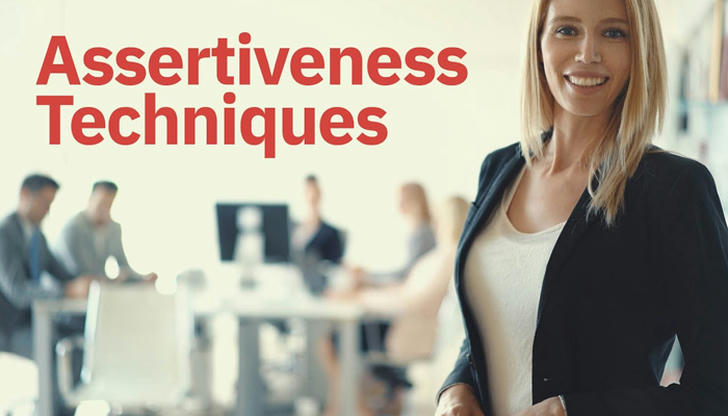Improving Your Communication Skills: Effective Strategies for Clear and Confident Interactions

Effective communication is an essential skill in both personal and professional settings. It influences relationships, career growth, and overall confidence in interactions. However, many people struggle with expressing their thoughts clearly, overcoming nervousness, or engaging in meaningful conversations. By understanding communication fundamentals and applying proven strategies, anyone can improve their ability to convey messages with clarity and confidence.
Strong communication skills help in negotiation, leadership, conflict resolution, and even day-to-day conversations. Whether it’s delivering a presentation, networking, or simply making small talk, knowing how to communicate effectively can make interactions smoother and more productive. This article explores key strategies to improve communication skills, enhance confidence, and foster better connections with others.
1. Understanding the Foundations of Communication
a. Verbal and Nonverbal Communication
Communication is more than just words; nonverbal cues play a crucial role in how messages are received. Studies show that body language and tone of voice contribute more to communication than the actual words spoken.
Verbal aspects:
Tone and pitch influence how messages are perceived. A calm, steady tone conveys confidence, while a fluctuating or shaky voice may indicate nervousness.
Speed and articulation affect clarity. Speaking too fast may confuse listeners, while speaking too slowly may cause them to lose interest.
Nonverbal communication:
Maintaining eye contact builds trust and engagement.
Facial expressions should match the message being conveyed.
Gestures can emphasize key points but should be used naturally.
b. Active Listening

Listening is just as important as speaking. Many people listen to respond rather than to understand, which can lead to miscommunication.
Techniques for active listening:
Nodding or using short verbal affirmations ("I see," "That makes sense") shows engagement.
Paraphrasing or summarizing what the other person said confirms understanding.
Asking follow-up questions encourages deeper discussion and demonstrates attentiveness.
c. Empathy and Emotional Intelligence
Understanding the emotions behind words can improve interactions and relationships.
Empathy allows for deeper connections and reduces misunderstandings.
Emotional intelligence helps in managing personal reactions and adapting communication to different audiences.
Recognizing nonverbal emotional cues, such as a furrowed brow or crossed arms, can provide insight into a person’s feelings, allowing for a more considerate response.
2. Strategies for Clear and Effective Communication
a. Organizing Your Thoughts Before Speaking
Unstructured speech can lead to confusion. Preparing thoughts before speaking ensures clarity.
Use the PREP method (Point, Reason, Example, Point) to structure responses.
Pause before responding to gather thoughts instead of speaking impulsively.
Consider writing down key points before an important conversation or presentation.
b. Improving Vocabulary and Articulation
A strong vocabulary enables precise expression of ideas.
Read regularly to expose yourself to different ways of phrasing ideas.
Use a thesaurus to learn alternative ways to express the same thought.
Practice pronunciation and use speech clarity exercises, such as tongue twisters.
Record yourself speaking and analyze areas for improvement.
c. Developing Assertiveness

Being assertive allows individuals to express their thoughts and needs confidently while respecting others.
Balance between passive, aggressive, and assertive communication styles:
Passive: Avoiding expressing opinions to avoid conflict.
Aggressive: Dominating conversations and disregarding others' views.
Assertive: Clearly expressing ideas while respecting others’ perspectives.
Techniques for assertiveness:
Use "I" statements (e.g., "I feel that..." instead of "You never...") to avoid sounding accusatory.
Set boundaries in discussions without being dismissive.
Maintain a confident posture and tone.
d. Avoiding Common Communication Pitfalls
Many people weaken their communication through bad habits such as:
Overuse of filler words: Words like "um," "like," and "you know" can make speech sound uncertain. Instead, pause to collect thoughts.
Vague language: Statements like "That thing we talked about" can be confusing. Be specific to prevent misunderstandings.
Failure to adapt to the audience: Using technical jargon with a general audience may cause confusion.
3. Enhancing Confidence in Communication
a. Overcoming Fear of Public Speaking
Public speaking is a common fear, but it can be managed through practice and mindset shifts.
Practice regularly: Rehearse in front of a mirror or record speeches to refine delivery.
Use relaxation techniques: Deep breathing, visualization, and progressive muscle relaxation can reduce anxiety.
Engage the audience: Make eye contact, ask questions, and use storytelling to keep the audience engaged.
b. Practicing Effective Conversations
Improvement comes with practice. Strategies include:
Role-playing different scenarios with friends or colleagues.
Seeking feedback from others to refine communication skills.
Observing skilled communicators to learn effective techniques.
Engaging in networking events or discussion groups to practice spontaneous conversations.

c. Building Self-Awareness and Continuous Improvement
Self-reflection and feedback are critical to long-term communication improvement.
Analyze past interactions: Consider what went well and what could be improved.
Accept constructive criticism: View feedback as an opportunity for growth rather than a personal attack.
Keep a communication journal: Document challenging conversations and lessons learned.
4. Practical Tools and Resources
Several tools can assist in developing communication skills:
Apps:
Speechify (improving speech clarity)
Orai (public speaking practice)
Grammarly (written communication enhancement)
Books:
How to Win Friends and Influence People by Dale Carnegie
Crucial Conversations by Patterson et al.
The Charisma Myth by Olivia Fox Cabane
Public Speaking Groups:
- Toastmasters International: Provides opportunities for structured speaking practice and feedback.
5. Conclusion
Mastering communication skills takes time and practice, but the benefits extend to all aspects of life. Whether in business, social situations, or personal relationships, the ability to communicate effectively enhances confidence, strengthens connections, and increases influence.
By implementing structured strategies, improving listening skills, and building confidence, anyone can become a more effective and persuasive communicator. Continuous self-improvement ensures ongoing growth and success in personal and professional interactions. Communication is not just about speaking—it’s about understanding and being understood.
